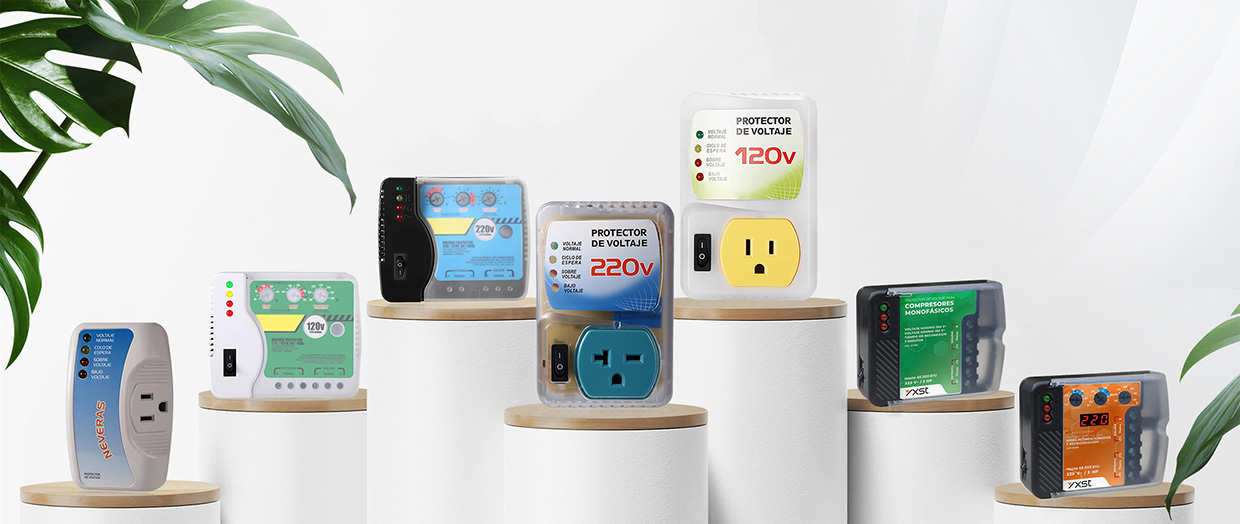Surge Protector Manufacturer Knowledge Sharing: Which Devices Are Most Easily Overlooked in Home Power Protection Solutions?
Date:2025-03-10 Click:645
1. Grounding system
- Problem: Many families ignore the integrity of the grounding system, especially in old houses or self-modified circuits.
- Risk: Poor grounding may cause leakage, electric shock risk, or make the surge protector ineffective.
- Recommendation: Check the grounding resistance regularly (should be ≤10Ω), ensure that all socket grounding wires are reliably connected, and add independent grounding electrodes when necessary.
- Problem: Surge protectors are often regarded as "optional", especially in areas where lightning is not frequent.
- Risk: Voltage fluctuations or small surges may gradually damage electrical appliances, shorten their lifespan, and even cause fires in severe cases.
- Surge protector manufacturers recommend: Installing SPDs at the front of high-value equipment such as distribution boxes, air conditioners, refrigerators, etc., and choosing products that comply with national standards (such as GB 18802.1).
3. Residual Current Device (RCD)
- Problem: Some households only install residual current devices on the main switch, but do not install them separately in sub-circuits (such as kitchens and bathrooms).
- Risk: Once a leakage occurs, the main switch trips, which may cause the whole family to lose power, and the fault point cannot be quickly located.
- Suggestion: Install residual current devices separately in humid areas such as kitchens and bathrooms to improve safety and convenience.
4. Line aging and capacity matching
- Problem: Old wires or overloaded lines are often overlooked, especially hidden wiring.
- Risk: Line aging may cause short circuits, overheating, and even fires; capacity mismatch may cause tripping or equipment damage.
- Suggestion: Check the status of wires regularly, use 4-6 square copper core wires for high-power circuits such as kitchens and air conditioners, and use 2.5 square wires for ordinary sockets.
5. Smart monitoring equipment
- Problem: Smart power monitoring equipment (such as voltage and current detectors) is often regarded as "non-essential".
- Risk: It is impossible to grasp the power consumption in real-time, and it is difficult to detect voltage anomalies or equipment failures in time.
- Suggestion: Install smart sockets or power monitoring modules to monitor parameters such as voltage, current, power, etc. in real-time, and automatically alarm when abnormalities occur.
6. Backup power supply and emergency equipment
- Problem: Home backup power supply (such as UPS, solar energy storage system) is often ignored, especially in urban areas with stable power supply.
- Risk: Power outages may cause data loss, equipment damage, or inconvenience in life.
- Suggestion: Configure UPS for key equipment (such as computers and medical equipment), or consider installing solar energy storage systems to improve energy self-sufficiency.
7. Socket layout and safety design
- Problem: Insufficient number of sockets or unreasonable layout (such as being blocked by furniture) are often ignored.
- Risk: Excessive use of power strips may cause overload, and unreasonable layout may affect convenience and safety.
- Suggestion: Plan the location of sockets according to the actual needs of the family, use splash-proof sockets in the kitchen and bathroom, and install sockets with protective doors in children's activity areas.
8. Lightning protection measures
- Problem: Lightning protection measures are often considered to be only applicable to high-rise buildings or areas prone to lightning.
- Risk: Lightning may be introduced into the room through power lines or signal lines, damaging electrical appliances or causing fires.
- Suggestion: Install lightning protection modules in the distribution box, and install signal lightning arresters on TV, telephone, and network lines.
9. Electrical appliance standby energy consumption management
- Problem: Electrical appliance standby energy consumption is often overlooked, especially for equipment such as TVs, computers, and air conditioners.
- Risk: Long-term standby not only wastes electricity but may also cause overheating risks.
- Suggestion: Use smart sockets or timer switches to reduce standby energy consumption save energy and protect the environment.


